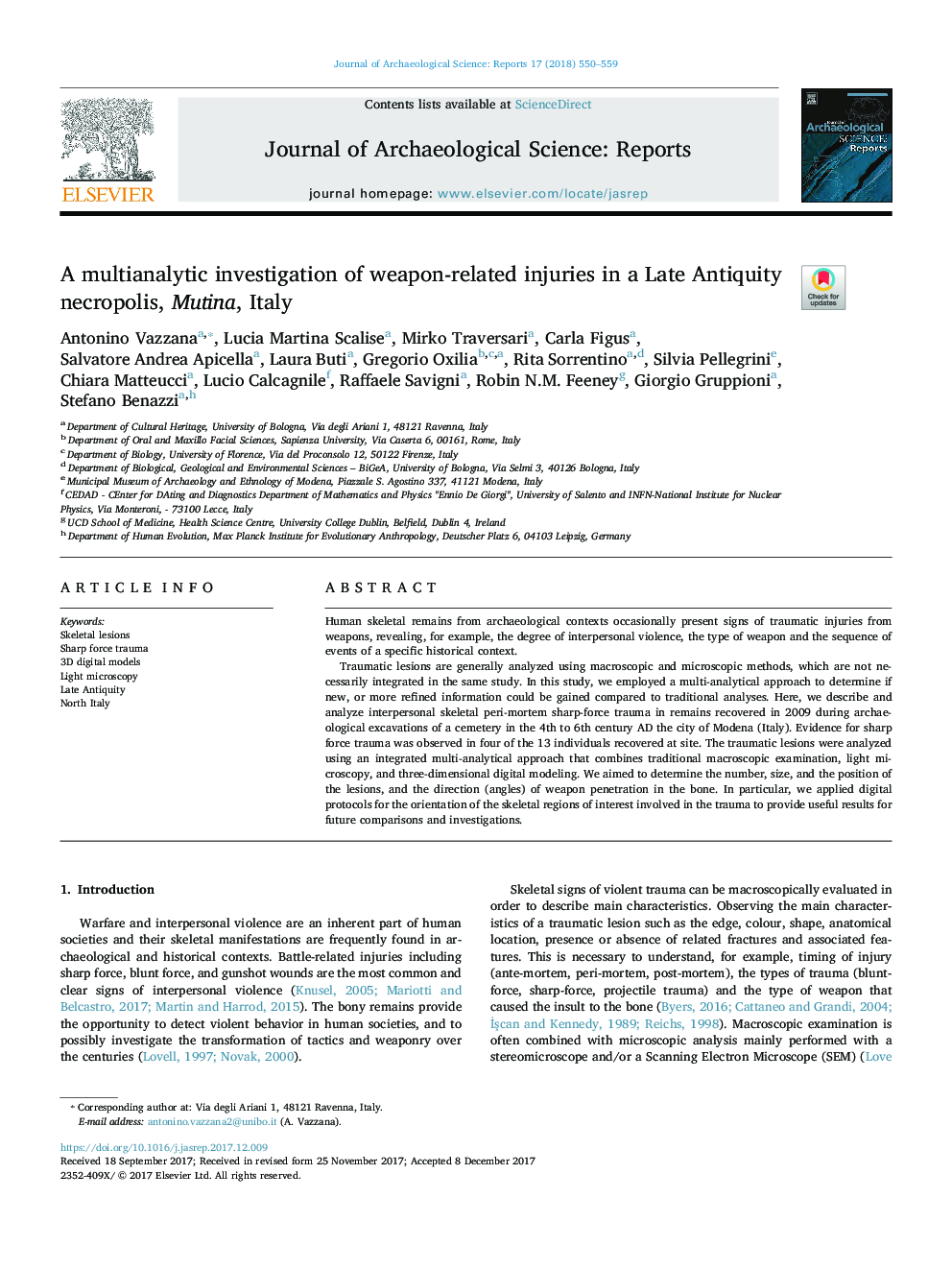| Article ID | Journal | Published Year | Pages | File Type |
|---|---|---|---|---|
| 7445223 | Journal of Archaeological Science: Reports | 2018 | 10 Pages |
Abstract
Traumatic lesions are generally analyzed using macroscopic and microscopic methods, which are not necessarily integrated in the same study. In this study, we employed a multi-analytical approach to determine if new, or more refined information could be gained compared to traditional analyses. Here, we describe and analyze interpersonal skeletal peri-mortem sharp-force trauma in remains recovered in 2009 during archaeological excavations of a cemetery in the 4th to 6th century AD the city of Modena (Italy). Evidence for sharp force trauma was observed in four of the 13 individuals recovered at site. The traumatic lesions were analyzed using an integrated multi-analytical approach that combines traditional macroscopic examination, light microscopy, and three-dimensional digital modeling. We aimed to determine the number, size, and the position of the lesions, and the direction (angles) of weapon penetration in the bone. In particular, we applied digital protocols for the orientation of the skeletal regions of interest involved in the trauma to provide useful results for future comparisons and investigations.
Related Topics
Social Sciences and Humanities
Arts and Humanities
History
Authors
Antonino Vazzana, Lucia Martina Scalise, Mirko Traversari, Carla Figus, Salvatore Andrea Apicella, Laura Buti, Gregorio Oxilia, Rita Sorrentino, Silvia Pellegrini, Chiara Matteucci, Lucio Calcagnile, Raffaele Savigni, Robin N.M. Feeney,
